How Best To Clean Mould Off Walls
Mould and mildew are a nightmare for any homeowner. They're an eye-sore, a health hazard, and can spread like wildfire.
Whether you've spotted a small patch of mildew in the bathroom or large chunks of mould on walls, getting rid of it should be your first priority. The next step is to find out what's causing it, so you can stop it from happening again.
Here, AXA tackles mould and mildew: from what causes it to how to prevent mould and mildew from coming back, for good.
- What is mould?
- What causes mould and mildew?
- How does mould affect health?
- Types of mould
- How do I deal with a mould and mildew problem?
- Is there a long-term solution to mould dand mildew?
What is mould?
Mould is a fungus that breaks down dead material. It grows in our homes because they offer the ideal conditions for it to grow – namely moisture, warm air, and materials to feed on, such as wood, carpet and dust.
It will continue to develop until it's cleaned and removed. However, dead spores can be just as harmful to our health, so it's important that you take care when getting rid of it.
What causes mould and mildew?
Mould and mildew are both caused by humidity – a high level of moisture in the air. Mould only starts growing on a surface once it's been wet for over 24 hours, so it's usually a symptom that your property has a problem with damp. If it does, you're not alone. It's estimated that 1 in 18 properties in England suffers from damp of some description.
Mould and mildew can often be a problem in houses that have naturally high humidity levels, like those near the coast or beside a lake. The moisture levels in the air can increase during long periods of unpleasant weather, and if mould spores get into your property, it can lead to patches appearing.
There are different types of damp, and finding out which one is causing your mould problem is the first step towards stamping it out for good.
Condensation
Condensation is one of the biggest mould-causing culprits, which is why mould often forms in the steamiest room of your house: the bathroom.
Rising damp
If condensation isn't an issue in your property, the mould and mildew may be caused by something more serious like rising damp. You can learn how to deal with rising damp here.
Humidity
If you notice mould or mildew in your home after a few weeks of rain, it might be caused by a general increase in the humidity. If the mould or mildew is worse in one patch, it could be a sign of a weakness in your property's external walls, or a leak in your guttering.
How does mould affect health?
Mould can cause a whole host of health problems and the following individuals are especially at risk:
- babies and children
- elderly people
- people with existing skin problems, such as eczema
- people with respiratory problems, such as allergies and asthma
- those with a weakened immune system, such as those undergoing chemotherapy
According to the World Health Organisation, a large chunk of the world's 300 million cases of childhood asthma is linked to prolonged exposure to indoor dampness and mould. Individuals with asthma tend to be allergic to mould and breathing in spores can cause asthma attacks.
But mould doesn't just affect those living with diagnosed respiratory conditions, it can also cause ill health in otherwise healthy people and lead to symptoms including upper respiratory tract problems, shortness of breath, wheezing and coughing.
Similarly, people who live in damp and mouldy homes face an increased risk of depression, as well as increasing the risk of respiratory symptoms and asthma.
Types of mould to look out for in the home
Not all mould is created equal. So, when tackling mould growth in your home, it's a good idea to know what you're dealing with – especially as each type of mould has its own set of characteristics, growth patterns and health effects to take into consideration.
Being aware of where mould grows in home can help you stop the problem at its source and prevent you from going through the same mould, same mould process of locating and treating it. Here are some common household moulds to keep an eye out for.
Alternaria
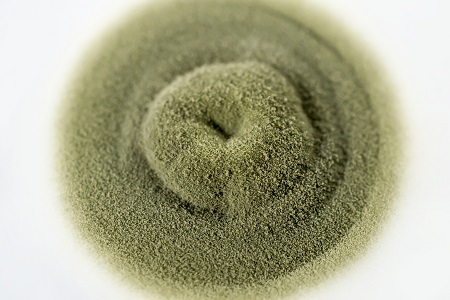
- What does it look like?
Alternaria tends to be velvet-like in texture with dark green or brown hairs. - Where does it grow?
Alternaria tends to be found in damp places such as showers, baths, or under leaky sinks. It grows all year round but is most common between July and September. And because it spreads quickly, it's a good idea to get rid of it as soon as you've spotted it. - Health hazards
Alternaria can cause asthma-like symptoms affecting the upper respiratory tract, nose and mouth.
Aureobasidium
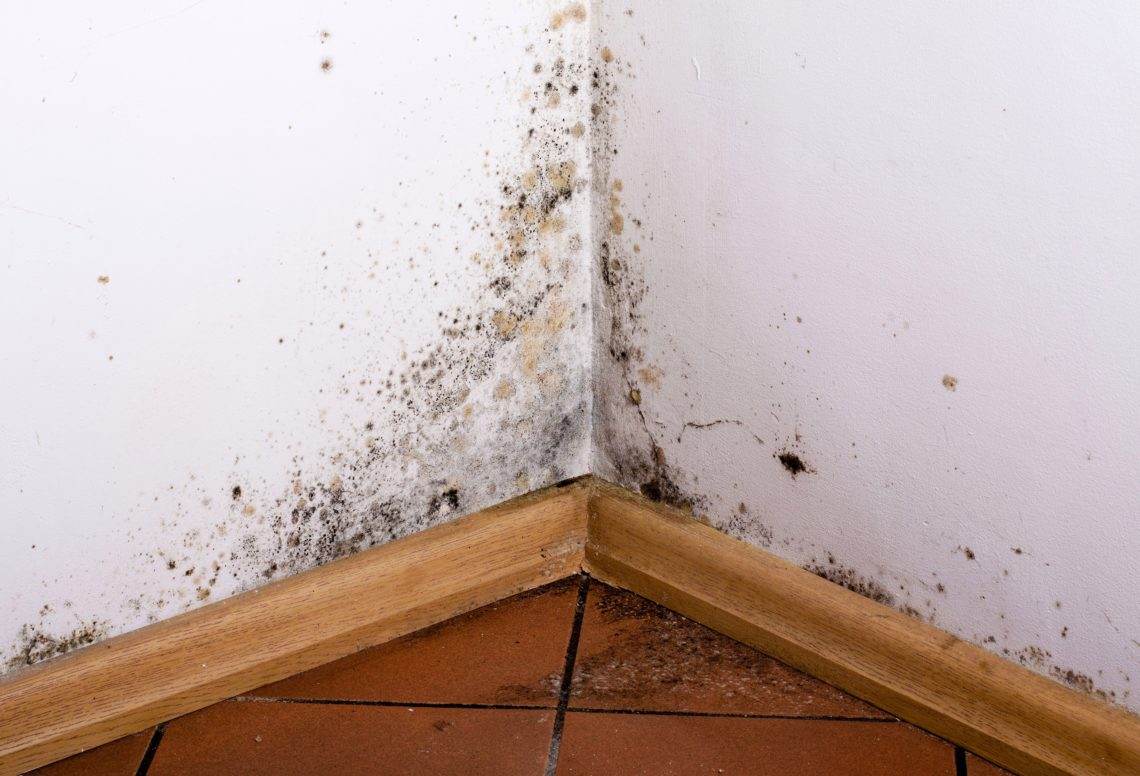
- What does it look like?
Aureobasidium begins as a pink, brown, or black colour and usually turns a darker brown as it ages. - Where does it grow?
Aureobasidium can be found growing behind wallpaper or on painted or wooden surfaces. - Health hazards
Aureobasidium can cause eye, skin and nail infections and as such, should never be touched with bare skin.
Cladosporium
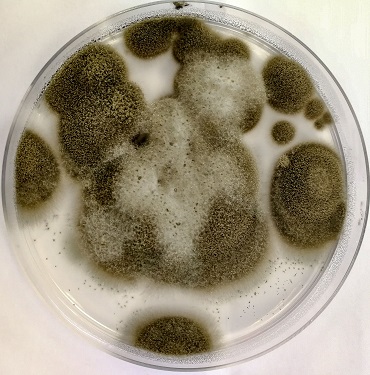
- What does it look like?
Cladosporium is a greenish brown coloured mould with a suede-like texture. - Where does it grow?
Cladosporium can grow in both cold and warm climates. It is often found in indoor materials, such as upholsteries, fabrics and carpets, and can grow inside cupboards and under floorboards. - Health hazards Cladosporium can cause allergic reactions to the eyes, nose, throat and skin and exacerbate symptoms of asthma and sinusitis. Due to its potential for causing skin and lung irritation, Cladosporium should never be handled directly.
Penicillium
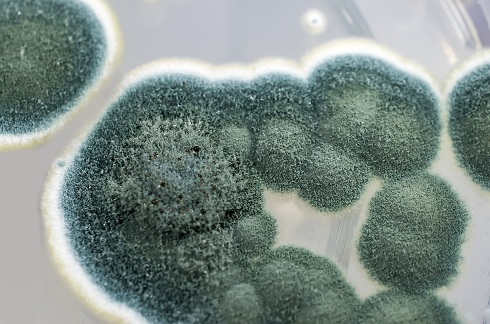
- What does it look like?
Penicillium is blue or green in colour with a velvety texture. - Where does it grow?
As well as on spoiled food, Penicillium can be found on organic, biodegradable materials like wood as well as in carpets, wallpapers and mattresses. It can be found throughout the year with growth peaking between January and February. - Health hazards
Penicillium spores can become airborne and be inhaled by occupants of a home, which can lead to asthma and sinusitis. 'It can be harmful to those with weakened immune systems as it can worsen their symptoms and result in further health problems.
Black mould (Stachybotrys)
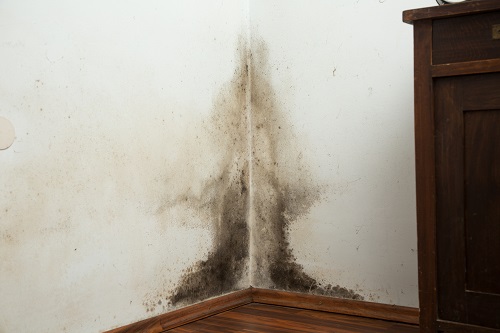
- What does it look like?
Usually dark green or black in colour and has a slimy texture that's easy to mistake for dirt. - Where does it grow?
Grows in damp areas with high humidity levels and often grows on natural materials such as woods, cardboards, wicker and paper. - Health hazards
Black mould is generally harmless but those who are exposed to a specific strain called Stachybotrys may experience burning sensations in the airways, nose bleeds, fatigue, sinusitis, fever, headaches and a persistent cough. Stachybotrys is especially dangerous to children so ensure you remove them from your home when seeking professional help to get rid of it.
How do I deal with a mould and mildew problem?
Use mould and mildew cleaning sprays
You can use a specialist mould and mildew cleaning spray or create one yourself with household cleaning items before a session of mould and mildew removal. One-part bleach to four parts water is an effective mould and mildew killer.
Use a cloth or rag to help clean the mould away and dispose of it in a bag after using it to prevent spreading mould to another part of your home.
Wear protective clothing
Always wear rubber gloves, safety goggles, and a dust mask when cleaning mould. This might sound a bit excessive, but mould is nasty stuff and you don't want to breathe it in. Remove mould with a damp cloth, scrubbing gently until its gone. Once you're finished, dry the area well with a soft cloth.
Is there a long-term solution to tackling mould and mildew?
If you want to prevent mould and mildew from ever coming back, then you need to get to the bottom of the problem. It's essential that you find out what's causing damp in your house and take the proper precautions to prevent it from recurring.
Let there be light
Mould and mildew like warm, moist and dark spaces. Make sure you open the curtains during the day so that there's plenty of natural light and fresh air entering the room.
Keep air moisture to a minimum
If you notice any condensation gathering on your walls, windows or ceiling, dry them immediately. Investing in moisture traps and placing them under windows or suspected damp area is another way to attract moisture before it forms. Dehumidifiers can also help to remove moisture from the air.
Keep bathroom and kitchen doors tightly closed, and make sure you open a window whenever you're cooking on the stove top or using the tumble dryer when drying clothes to stop excess moisture from being released into the air.
Keep your home spic and span
Mould doesn't appear from nowhere – it's a fungus and grows from spores. Cleaning, dusting, hoovering often and replacing your shower curtain regularly will help get rid of dormant spores and reduce the chances of the mould coming back.
Clean organic furniture and materials regularly
Mould and mildew feed on organic materials like wood, cotton, and cardboard. Disinfect all of your wooden surfaces, wash fabrics, and replace cardboard storage boxes. This will get rid of any spores that may be lurking in your home.
Keep your home well-ventilated
Ventilation is the enemy of damp. Once you've discovered the root of your problem it's important to keep your property well ventilated to stop the damp from coming back. And if you regularly experience issues with condensation, then you'll need to tackle your home's humidity.
Out with the mould, in with the new
No matter how much elbow grease you put in, some household materials affected by mould can't be saved. If this is the case, then materials such as carpet, drywall and wood need to be disposed of – just make sure you're wearing the safety clothing mentioned above before handling them.
Keep your home watertight
If mould is being caused by water entering your home via damaged or blocked guttering, then you'll either need to repair it, replace it, or clear it out. It's also a good idea to make sure that the seals around windows, pipes and doors are fully intact to help keep your home watertight.
Ensure your home is well-insulated
When colder climes bite, making sure your home is insulated properly can help keep air humidity and condensation levels to a minimum.
Call in the professionals
Sometimes mould can even be caused by damaged brickwork or leaking pipes within your internal walls, which should be tackled by a professional. And if your property is suffering from rising damp, you'll need to contact a professional builder to add a damp-proof course, which creates a barrier and stops water from being absorbed from the ground.
When it comes to tackling mould in the home, identifying and eliminating the fungus as quickly as possible is crucial to prevent it from growing and worsening. If it's safe to remove the mould yourself, make sure that you always wear protective clothing, otherwise consult professional help as soon as you can. And to prevent it from reoccurring in the future, keep your home well-ventilated and moisture levels to a minimum to keep it mould-free for good.
How Best To Clean Mould Off Walls
Source: https://www.axa.co.uk/home-insurance/tips-and-guides/how-to-get-rid-of-mould-for-good/
Posted by: caricoevelf1974.blogspot.com

0 Response to "How Best To Clean Mould Off Walls"
Post a Comment